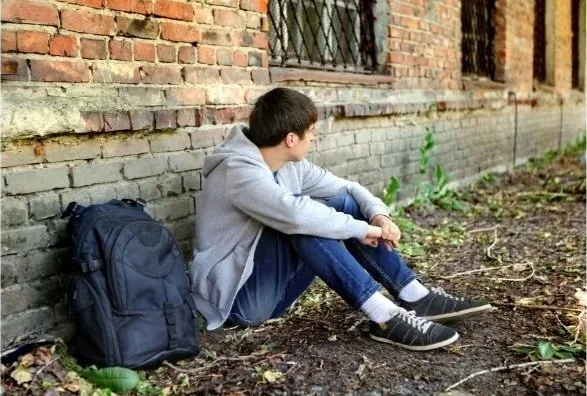Breaking the Cycle: Prevention, Intervention, and Policy Solutions for Psychological Maltreatment
Part Four of a Four-Part Deep Dive - Reading time: 5 to 7 minutes
This is the final installment in our four-part deep analysis series on psychological maltreatment (PM). In Part 3, we examined how to identify PM, from understanding risk factors to conducting assessments and using multidisciplinary approaches. Now we turn to the ultimate goal: stopping PM before it starts, intervening effectively when it occurs, and reforming policies so that every child, regardless of where they live, is protected (APSAC, 2019).
From Awareness to Action
Recognizing PM is only the beginning. Awareness without action leaves children in the same harmful environments we have learned to identify. Prevention requires more than well-intentioned advice to parents—it demands coordinated strategies across individual, family, community, and societal levels. Intervention must be timely, compassionate, and backed by evidence. And policy change is critical to ensure that protections are not determined by the accident of geography or local statutes (Brassard, Hart, Baker, & Chiel, 2019).
Prevention: Building Protective Shields
Prevention efforts work best when they operate across multiple layers of a child’s world.
At the child level: Programs that foster social-emotional learning can strengthen resilience and self-worth. When children can name their feelings, set boundaries, and seek help from trusted adults, they are better equipped to navigate harmful dynamics. School-based programs like Second Step or PATHS (Promoting Alternative Thinking Strategies) have shown promise in building these skills (Durlak et al., 2011).
At the family level: Prevention often means supporting parents before stress leads to harmful behavior. Home visiting programs, such as Nurse-Family Partnership, provide new parents with guidance on child development, emotional attunement, and nonviolent discipline strategies. Parenting education workshops can be tailored to diverse cultural contexts, ensuring that messages resonate without reinforcing harmful norms. Access to mental health care—particularly for parents with their own trauma histories—can reduce the likelihood of intergenerational cycles of maltreatment (Schofield & Lee, 2011).
At the community level: Prevention takes the form of accessible resources and strong social networks. When neighborhoods have safe parks, quality childcare, and active community centers, parents have outlets for stress and children have opportunities for healthy socialization. Public awareness campaigns can also play a role, reframing PM as a serious issue on par with physical abuse. These campaigns can help dismantle harmful myths, such as the belief that “words don’t hurt” or that emotional neglect is simply “tough love” (Glaser, 2002).
Intervention: Repairing What Has Been Harmed
When PM is already occurring, intervention must address both the immediate harm to the child and the conditions that allowed it to develop. The first priority is ensuring the child’s emotional and physical safety. This may involve temporary removal from the home in severe cases, though many interventions aim to keep families intact while changing harmful patterns (APSAC, 2019).
Therapeutic interventions should be tailored to the child’s developmental stage and the nature of the harm. Trauma-focused cognitive behavioral therapy (TF-CBT) can help children process experiences and build coping strategies. For very young children, dyadic therapies like Child–Parent Psychotherapy (CPP) focus on strengthening the caregiver–child bond and repairing trust.
For caregivers, intervention often involves structured programs that teach positive parenting skills while addressing underlying issues. The Positive Parenting Program (Triple P) and Parent–Child Interaction Therapy (PCIT) are two evidence-based models that have demonstrated success in reducing harmful behaviors and improving parent–child relationships (Thomas & Zimmer-Gembeck, 2007). These programs are most effective when participation is supported, rather than coerced, and when parents have access to the practical resources—like transportation or childcare—that make attendance possible.
The Role of Multidisciplinary Collaboration
As with identification, intervention benefits from the involvement of multiple sectors. Schools can provide counseling and monitor progress. Healthcare providers can screen for signs of ongoing harm and connect families to services. Social workers can coordinate between agencies to ensure that efforts are not duplicated or working at cross-purposes. In some communities, Family Resource Centers serve as hubs where families can access multiple supports under one roof, reducing the stress of navigating a fragmented system (Stirling, 2018).
Policy Reform: Closing the Gaps
Even the most well-designed prevention and intervention strategies will falter if the policy landscape is uneven. As we explored in Part 2, definitions of PM vary dramatically across states. Some states explicitly include multiple APSAC categories in their statutes; others make no mention of emotional abuse at all. This inconsistency leaves many children unprotected and makes it difficult to gather accurate national data (Baker, 2009).
Uniform statutory definitions based on APSAC’s guidelines would create a common foundation for identifying and addressing PM. Paired with a clear harm standard, these definitions could help ensure that similar cases receive similar responses, regardless of jurisdiction.
Policy reform should also include mandated reporter training that specifically covers PM. Many professionals report feeling uncertain about whether—and how—to report suspected emotional abuse (Kenny, 2001). Training that includes case examples, cultural considerations, and assessment tools can increase both confidence and accuracy.
Funding is another critical policy lever. Prevention programs, therapeutic services, and professional training require sustained investment. Policymakers should view these as long-term cost-saving measures: research shows that preventing or mitigating child maltreatment reduces future expenditures on health care, criminal justice, and social services (Fang et al., 2012).
Future Research: Expanding the Knowledge Base
While the field has made progress, many questions remain. We need more longitudinal research to understand the long-term outcomes of PM-specific interventions. Studies should also explore how PM manifests across different cultural contexts and whether certain forms are more prevalent—or more harmful—in specific settings. Integrating PM screening into routine pediatric care could provide valuable data while catching cases earlier (Brassard, Hart, Baker, & Chiel, 2019).
“The best way to stop psychological maltreatment is to prevent the conditions that give rise to it.
”
Why This Series Matters
Over the course of this series, we have traveled from the big picture to the fine details, from theory to practice. In Part 1, we explored PM’s history, prevalence, and impact. In Part 2, we defined it through APSAC’s seven categories and the harm standard. In Part 3, we learned how to identify it using risk factors, assessment tools, and multidisciplinary approaches. And now, in Part 4, we’ve examined how to prevent it, intervene effectively, and reform the systems that shape our collective response.
The next step belongs to all of us. For professionals, that may mean advocating for better training, using the harm standard consistently, or implementing evidence-based programs in your practice. For policymakers, it means passing legislation that defines PM clearly, funds prevention and intervention, and holds systems accountable. For community members, it can be as simple—and as powerful—as paying attention, speaking up when you suspect harm, and supporting the families around you.
Something to Think About
Breaking the cycle of psychological maltreatment requires action at every level. Think about your own role:
• As an individual: How do you respond when you see or hear harmful interactions with children? What small steps could you take to support a child or caregiver in your community?
• As a professional: Are there opportunities to bring evidence-based programs, new training, or multidisciplinary collaboration into your daily practice?
• At the policy level: What changes could you advocate for—clearer definitions, better training, more funding—so that protection does not depend on where a child lives?
Real change happens when individuals, professionals, and policymakers all contribute. What’s one action you could take today to help ensure children are not only safe from harm but also supported to thrive?


